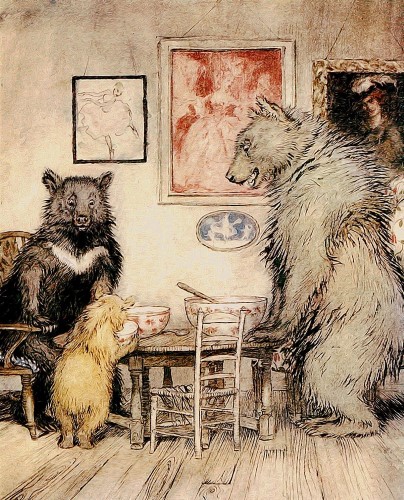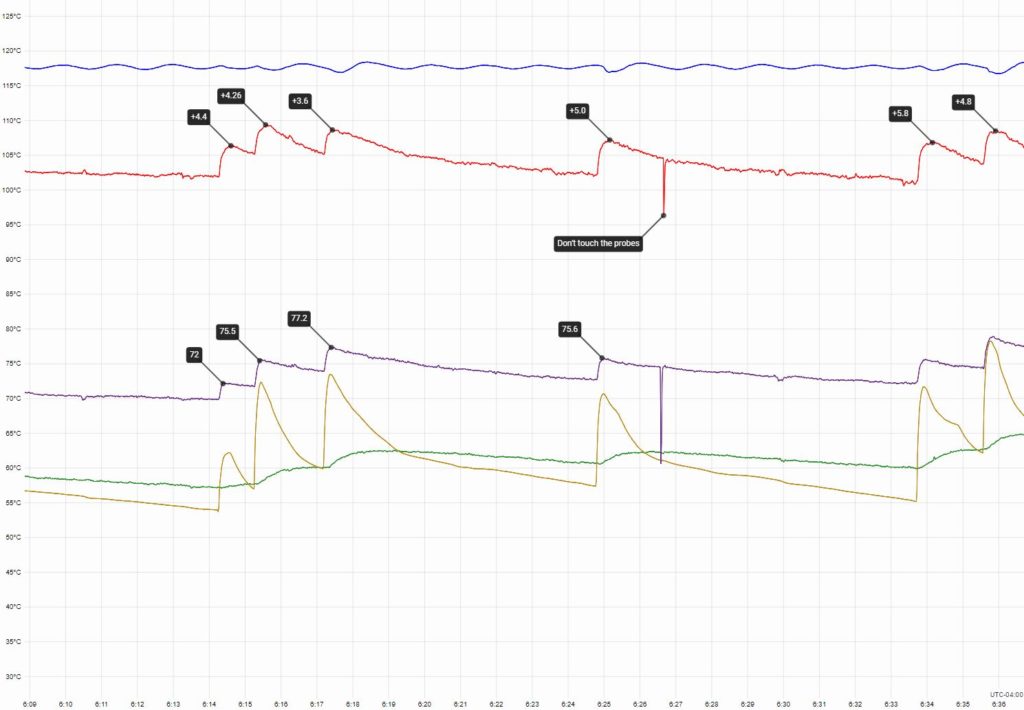
[Ed: Re-post from May 12 2018]
I imagine everyone remembers the story of Goldilocks and the Three Bears?
I love the painterly references on the wall – a Degas ballerina on the left, an old master on the right, an enameled reproduction of a Greek vase in blue? But I digress. Apart from carrying a wee bit of Freudian baggage, it is also perhaps not the most pertinent of fairy tales for our times (how would you react if you came home and found someone sleeping in your kid’s bed?). Anyways, what I wanted from it for today’s post is the porridge. You know, the three kinds of porridge that are too hot, too cold and just right? You see where I’m going with this… Except that in my story there are four bears, or rather three bears and no bear, but neither of those versions scan very well, so we are going to stick with the original title. First up is Papa bear’s porridge.

This is one of the first temperature profiles that I took of the prototype machine. The methodology is very similar to the tests on the Brugnetti [Auroras] that I posted previously. As always, the Scace-values are not terribly useful except for comparison.
A reminder of the colors:
Blue – boiler wall
Red – brew reservoir
Purple – group neck
Green – PF receiver on the group
Yellow(ish) – Scace puck
Observations:
- The boiler temperature curve is sinusoidal as opposed to saw-tooth and has a delta of 0.7 C between minima and maxima. This performance was obtained using only the P term of the [PID] algorithm. It could probably be improved with some additional tuning, but I haven’t bothered because it is already pretty good.
- Brew reservoir temperature is stable at idle and shows no trace of the boiler temperature variation.
- Recovery times for a shot are about 2 minutes per degree for the group and 1 minute per degree for the brew reservoir.
- Group temperature at idle (~70 C) is quite a bit lower at idle than the Auroras (~80 C and ~83 C for the horseshoe and diagonal versions respectively).
- Don’t touch the probes.
Conclusions:
- Job (pretty much) done on the PID boiler control.
- Plenty of room for improvement on the brew reservoir temperature stability which is gaining too much heat after a pull.
- The whole shebang has to be hotter.
Next up: Mama bear and No bear.

We stumbled ove here different website and thought I may as well check things
out. I like what I see so i am just following you.
Look forward to exploring your web page yet again.
Hello Nate, welcome :)